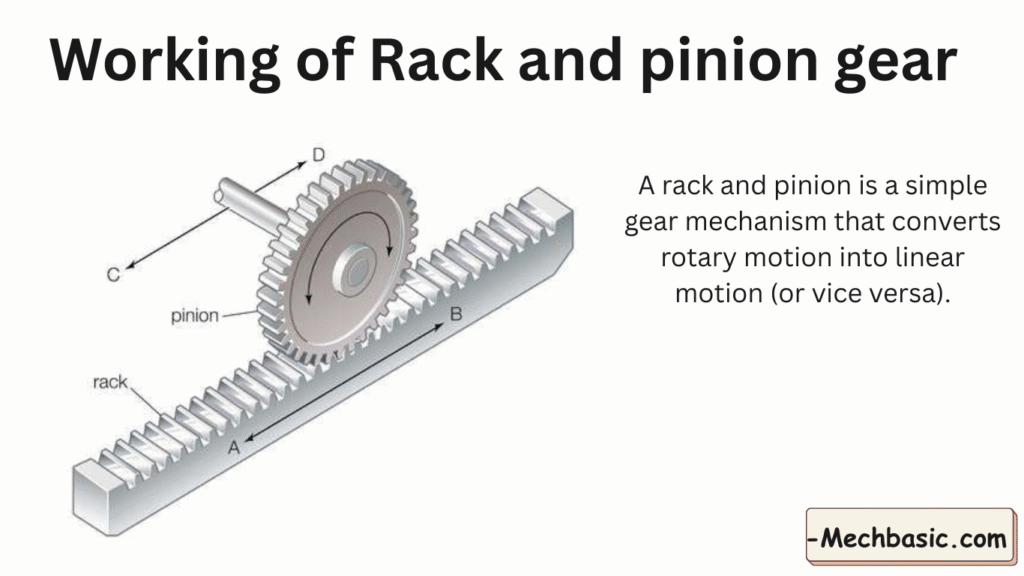Here’s a clear explanation of how a rack and pinion gear works:

What is a Rack and Pinion Gear ?
A rack and pinion is a simple gear mechanism that converts rotary motion into linear motion (or vice versa).
The rack and pinion is the most common type of steering mechanism used in modern cars.
- It converts the rotary motion of the steering wheel into linear motion that turns the wheels.
- It consists of two main parts:
- Pinion Gear – a small round gear connected to the steering shaft.
- Rack – a straight gear (a toothed bar) that moves left or right as the pinion rotates.
Construction
- Pinion Gear – A small circular gear.
- Rack – A flat, straight bar with gear teeth cut along one side.
- Both are enclosed in a housing and lubricated to reduce friction.
Working Process
- Rotation of Pinion Gear
- When you turn the steering wheel, the steering shaft rotates the pinion gear.
- Rack Movement
- The pinion gear teeth mesh with the teeth on the rack.
- As the pinion rotates, it slides the rack left or right, depending on the direction of rotation.
- This converts the rotary motion of the pinion into linear motion of the rack.
- Transmitting Motion to Wheels
- The ends of the rack are connected to tie rods.
- As the rack moves, it pushes/pulls the tie rods, turning the steering arms and front wheels.
Rack and pinion gear Working animation:
How rack and pinion gear used in steering system?
When the driver turns the steering wheel, the steering shaft rotates the pinion gear.
The pinion gear’s teeth engage with the rack’s teeth, causing the rack to slide left or right.
The rack’s movement pushes or pulls the tie rods, which turn the steering knuckles.
This makes the front wheels pivot, steering the vehicle in the desired direction.
Key Characteristics
- Direct Steering Response: Very little play, giving the driver excellent road feel.
- Simple & Compact: Requires fewer parts than worm-and-gear systems.
- Bidirectional: The system also works in reverse — movement of the rack can rotate the pinion (used in some applications like measuring devices).
Advantages in Steering
- Precision control
- Smooth operation
- Lightweight and easy to package in modern vehicles
Other courses:



